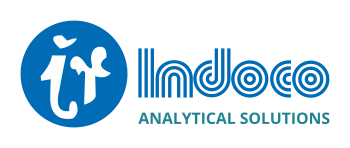Elemental impurities are the impurities that can come along with the final drug product and can come through different ways either for the raw material source or through the process of synthesis or manufacturing. The common elements found are arsenic, mercury, cadmium, lead, catalysts and environmental contaminants that can appear through many ways even by interaction with the equipment system during manufacturing.
The elemental impurities in drug products have no therapeutic effect and can be potentially dangerous to the patients. Therefore they must be either controlled in acceptable limits or removed completely through the process.
Elemental impurities guidelines:
There are several strategies to provide the data for validation and establishing a toxicity profile of the drug compound. And hence the elemental impurities guidelines help in understanding the evaluation of the toxicity data for the potential elemental impurities. These impurities go through risk based assessment by the guidelines according to their PDE permitted daily exposure limit for each element. To ensure the proper control of such unwanted elemental impurities it is necessary to estimate the quality and consistency of the ingredients for the manufacture and also proper methods to control the impurities in the drug compound.
The guidelines associated with the elemental impurity detection and to maintain the strength, purity and quality of the drug products. These standards are controlled by U.S. Food and Drug Administration (FDA) in order to check the quality, safety and administration and to protect the public health.
The new standards for elemental impurities guidelines as per the ICH rules give the control to draft the scientific aspect of the drug registration scheme. This induces regulatory aspect of the drug registration to provide clarity and detailing regarding the toxicity profile and the impurity profile of the drug candidate for its safe and efficacious use.
Elemental impurities give rise to pharmacological–toxicological effects; therefore it is necessary to update the elemental analysis of the pharmaceutical raw materials products. The new regulations for the elemental impurities guidelines ae incorporated to do the analysis of the drug compounds by using inductively coupled plasma mass spectrometry (ICP-MS) and microwave-assisted digestion for specific drugs. The elemental impurities guidelines are also applied to medicinal substances, polypeptides and proteins.
The new regulations in the elemental impurities guidelines are upgraded, implemented and also extended to propose robust analytical procedures for the determination of elemental impurities in drug products and excipients. They specify the elemental determination and toxicity limits for each element.
Elemental impurities can be present in the APIs, excipients or tin the fnal product or even in the formulation process or it can be present due to interaction with the packaging, containers, raw materials or reagents or stabilizers, fillers, colourants and binders added. Any form the elemental impurity can generate toxicological effect. Hence a modernized standard method is developed for the evaluation of elemental impurities standard. It is required to incorporate upgraded analytical methods for information on the elemental impurities.
Elemental impurities can be controlled through instrumental analysis and generic visual testing of heavy metal sulphides for the specific elements in drug products. The risk based assessment ensures the control of the potential impurities according to the PDE limit.
Another approach according to the elemental impurity guideline is to undergo process validation, design of the drug product and continuous verification of the manufacturing equipment’s, container closure systems etc. The other part of assessment includes leachable and extractable studies, stability studies for the clinical development and formulation changes.





